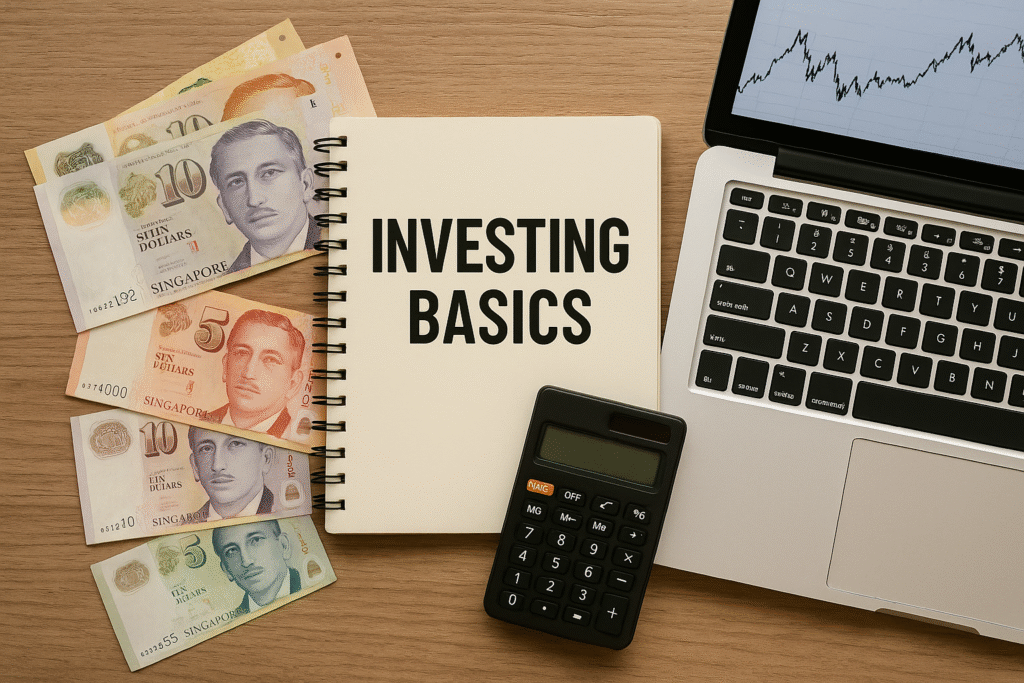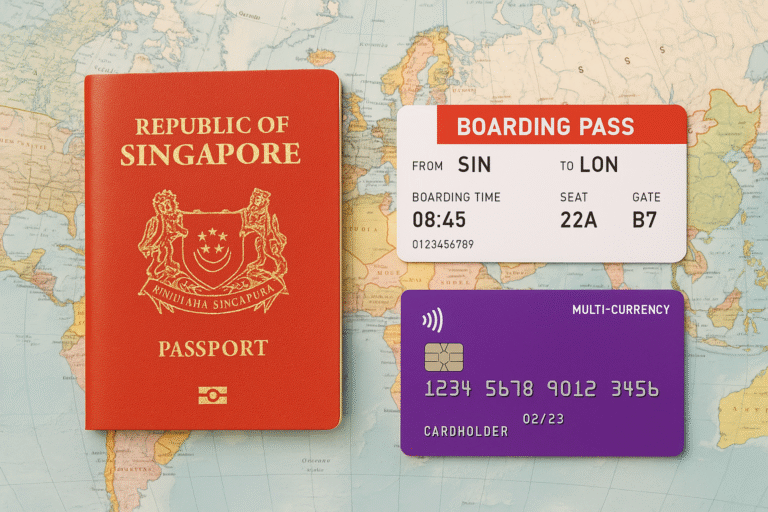Introduction – Why Investing Matters in Singapore

This Beginner’s Guide to Investing in Singapore will show you why growing your wealth in one of the world’s strongest financial hubs is easier than you think.
Singapore may be one of the most expensive cities in the world, but it’s also one of the best places to grow your money. With a strong financial system, robust regulation, and easy access to global markets, investing is no longer just for the wealthy — it’s for anyone who wants to protect and grow their wealth over time.
If you’ve been relying only on savings accounts or fixed deposits, you’re probably not keeping up with inflation. This Beginner’s Guide to Investing in Singapore will walk you through the basics, the available options, and the steps to get started confidently in 2025.
1. Understand the Basics of Investing
Before diving into the “how,” it’s important to grasp the “why” and “what.”
What is Investing?
Investing is the act of putting your money into assets with the expectation that they will grow in value or generate income over time. Examples include stocks, bonds, ETFs, real estate, and even CPF top-ups.
Why Should You Invest?
As this Beginner’s Guide to Investing in Singapore explains, beating inflation, growing wealth, and achieving financial goals all start with taking that first step.
- Beat Inflation – Singapore’s inflation rate can range from 2–5% annually.
- Grow Wealth – Compounding returns make your money work for you.
- Achieve Financial Goals – Retirement, education, property purchase, or early financial freedom.
💡 Example: If you invest $10,000 at a 6% annual return, it could grow to over $18,000 in 10 years — without adding any extra money.
2. Set Your Investment Goals
You need a clear “destination” before you choose the vehicle.
Ask yourself:
- What am I investing for? (Retirement, passive income, wealth growth)
- How long can I leave the money invested? (Investment horizon)
- How much risk can I tolerate?
Short-Term Goals (1–3 years):
- Use safer investments like Singapore Savings Bonds or high-yield savings accounts.
Medium to Long-Term Goals (5–30 years):
- Consider diversified portfolios with stocks, bonds, REITs, and ETFs.
3. Learn the Different Investment Types in Singapore
Singapore offers a wide range of investment options, regulated by the Monetary Authority of Singapore (MAS).
In this Beginner’s Guide to Investing in Singapore, we’ll explore different asset classes — from stocks and bonds to REITs, ETFs, and CPF schemes.
A. Stocks (Equities)
- Ownership in a company.
- Potential for high returns but with higher volatility.
- Traded on SGX or international markets via brokers.
B. Bonds
- Debt instruments issued by governments or corporations.
- Lower risk compared to stocks, but generally lower returns.
- Examples: Singapore Government Securities (SGS), corporate bonds.
C. REITs (Real Estate Investment Trusts)
- Pooled investments in income-generating real estate.
- Popular in Singapore for their dividend payouts.
- Listed on SGX.
D. ETFs (Exchange-Traded Funds)
- Funds that track an index, sector, or commodity.
- Great for diversification at low cost.
- Example: STI ETF (tracks Straits Times Index).
E. Unit Trusts / Mutual Funds
- Pooled investments managed by fund managers.
- Higher fees than ETFs but actively managed.
F. CPF Investment Scheme (CPFIS)
- Use CPF Ordinary Account (OA) or Special Account (SA) funds to invest in approved instruments.
- Suitable for long-term retirement planning.
G. SRS (Supplementary Retirement Scheme)
- Voluntary savings scheme with tax benefits.
- Funds can be invested in various products like ETFs, bonds, and unit trusts.
4. Understand Risk and Diversification
Risk is a part of investing. The key is to manage it.
The Risk–Return Trade-Off
- Higher potential returns often come with higher risks.
- Safer assets like government bonds have lower returns.
Diversification
- Don’t put all your money into one stock or sector.
- Spread investments across asset classes and geographies.
💡 Tip: A well-diversified portfolio can smooth out your returns and reduce losses in bad years.
5. Choose an Investment Platform
In Singapore, you have several ways to access investments:
Brokerages
- Examples: DBS Vickers, OCBC Securities, FSMOne, Saxo, Interactive Brokers.
- Gives you direct control over your portfolio.
Robo-Advisors
- Examples: Endowus, StashAway, Syfe, AutoWealth.
- Automated portfolios based on your goals and risk profile.
- Lower cost and beginner-friendly.
Banks
- Offer structured deposits, unit trusts, and wealth management services.
- Usually higher fees compared to robo-advisors.
6. Steps to Start Investing in Singapore
Here’s a beginner-friendly roadmap:
- Set Your Budget – Decide how much you can invest without affecting your daily expenses.
- Open a Brokerage or Robo-Advisor Account – MAS-licensed platforms ensure safety and compliance.
- Choose Your First Investment – Start small to learn the process.
- Automate Contributions – Set up monthly investments (dollar-cost averaging).
- Track and Review – Rebalance your portfolio yearly.
7. Avoid Common Beginner Mistakes
- Investing without a plan – Leads to emotional decision-making.
- Chasing high returns – Often leads to higher losses.
- Ignoring fees – Small percentages eat into returns over time.
- Not diversifying – Increases risk dramatically.
8. Tax Considerations in Singapore
- No capital gains tax — profits from selling investments are generally tax-free.
- Dividends from Singapore companies are tax-exempt for individuals.
- SRS contributions reduce taxable income (capped at $15,300/year for Singaporeans & PRs).
9. Tools & Resources for Singapore Investors
- MAS Financial Institutions Directory – Verify regulated entities.
https://eservices.mas.gov.sg/fid - SGX – Learn about stocks, REITs, and ETFs.
https://www.sgx.com - CPF Board – Understand CPFIS investments.
https://www.cpf.gov.sg
10. Beginner Portfolio Example
| Asset Class | Allocation | Example Products |
|---|---|---|
| Singapore Stocks | 30% | STI ETF |
| Global Stocks | 40% | Vanguard Total World ETF (VT) |
| Bonds | 20% | ABF Singapore Bond Index Fund |
| REITs | 10% | CapitaLand Integrated Commercial Trust |
Final Thoughts
This Beginner’s Guide to Investing in Singapore shows that with the right plan and regulated platforms, investing doesn’t have to be overwhelming.
Investing in Singapore doesn’t have to be overwhelming. By starting with a clear plan, diversifying, and using regulated platforms, you can grow your wealth steadily over time.
If you’re ready to start, read our Endowus Referral Guide to see how you can invest your CPF, SRS, and cash — and get a welcome bonus while doing it.
Disclaimer: This article is for educational purposes only. Always do your own research and consult a licensed financial adviser before making investment decisions.




